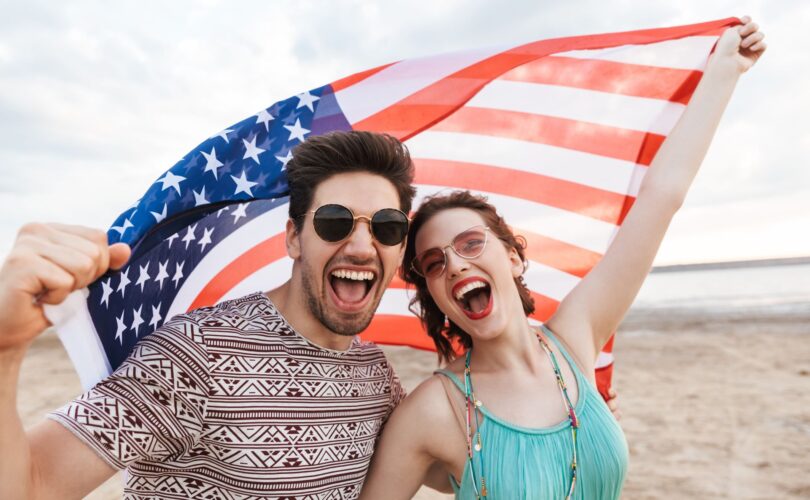The J-1 visa is one type of non-immigrant visa that allows travel to the US for the purpose of participating in cultural and educational exchange programs in the US. These programs allow students, professionals and young adults to gain work experience, take seasonal jobs or study in the US. The J1 visa is popular with participants in programs such as Work and Travel, Au Pair, Fulbright scholarship, job placement and training.
Travel and education in the US – what documents do I need?
To enter the U.S. on an exchange program, students need a J-1 visa to the U.S. and a DS-2019 form, which is issued by the sponsoring organization. If the purpose of the trip is full-time education, an F-1 student visa is required. In any case, other documents are also required, such as the DS-160 form, a passport valid for the entire stay in the US, and proof of participation in the program or university.
How to obtain a J-1 visa?
The J-1 visa is one of the most popular types of cultural exchange visas, which allows foreign nationals, including students, to complete an internship, seasonal work or participate in exchange programs in the United States.
The J-1 visa application process requires:
- Finding a sponsoring program: Before you can apply for a visa, you must find a sponsoring organization that will issue a DS-2019 form. A sponsor is an organization accredited by the U.S. government, which must verify your eligibility for the program and then issue a DS 2019 form.
- Filling out the DS-160 form: This visa form is filled out online and then you register with SEVIS (System for Electronic Verification and Tracking of Participants).
- Interview at the embassy: In the next step, you make an appointment for a visa interview at the American embassy, where you present the required documents.
- Obtaining a visa: Once you pass the process, a visa will be issued and placed in your passport. Individuals under the age of 21 can also apply for a visa at a US consulate or embassy. The cost of obtaining a J-1 visa is $185.
How to apply for an F-1 student visa?
The F1 visa is for those who want to study full-time at universities, high schools or other academic institutions in the United States. To obtain it, you need to know English, be admitted to an accredited school in the US, get an I-20 form issued by a US university, register with SEVIS, submit a DS-160 application and have an interview at a US consulate.
During the interview, you will need to prove that you have sufficient funds to cover the costs of studying and living in the U.S. and that you intend to return to your country after graduation.
The period of validity of the F-1 visa corresponds to the period of study.
Do I need a visa to enter the U.S. under the Work and Travel program?
Yes, a J-1 visa is required to enter the U.S. under the U.S. Work and Travel program, which allows you to legally work and travel in the U.S. This visa is required to participate in the exchange program and work seasonally in the United States.
Easy Travel Abroad agency guides participants step-by-step through the entire application process, making obtaining the visa easy and hassle-free. The whole process with Easy Travel Abroad is really simple and fast, making the preparation for the trip enjoyable and stress-free.
Types of US visas
When traveling to the US, you need to obtain a travel authorization or US visa. The United States offers different types of visas, depending on the purpose of your trip, such as work, study, tourism or cultural exchanges. Each type of visa has specific requirements, application process and different conditions of stay. Choosing the right type of visa is key to legally entering the US and meeting the formal requirements for travel.
Here is a complete table of US visa types and their brief description:
| Type of Visa | Purpose of Application | Description |
|---|---|---|
| A-1, A-2, A-3 | Visa for Diplomats and Officials | Intended for representatives of foreign governments, their families and support staff. |
| B-1/B-2 | Tourist and Business Visa | The B-1 visa is for business purposes and the B-2 is for tourist and family visits. The maximum stay is up to 6 months. |
| C-1, C-1/D | Transit through the U.S. or crew visa | C-1 visa for persons in transit through the U.S., C-1/D for crew members of aircraft or sea vessels. |
| D | Crew visa | Visa for crew members of aircraft or sea vessels. |
| E-1, E-2 | Trade and Investment Visa | Visa for persons engaged in trade (E-1) or foreign investors (E-2). |
| F-1 | Student Visa | Visa for those studying full-time in the U.S., at U.S.government-approved universities. |
| G-1, G-2, G-3, G-4 | Visas for representatives of international organizations | Visas for representatives and employees of international organizations, such as the United Nations. |
| H-1B | Visa for Specialized Workers | Visa for individuals employed in highly skilled positions, such as computer scientists, engineers. |
| H-2A, H-2B | Visa for seasonal workers | H-2A for agricultural workers, H-2B for seasonal workers in other sectors, such as tourism and construction. |
| I | Visa for Journalists and Media Representatives | Intended for journalists, reporters, international media representatives doing work in the US. |
| J-1 | Cultural exchange visa | Visa for participants in exchange programs such as Work and Travel, internships, training, or Au Pair. J-2 visa is allotted to spouses or children of J-1 visa holders allowing them to accompany him or her during their study. |
| K-1 | Fiancé Visa | A visa for fiancées of U.S. citizens to enter the U.S. for the purpose of marriage. |
| L-1 | Internally Transferred Employee Visa | A visa for employees of multinational companies transferring to a branch in the US. |
| M-1 | Vocational Student Visa | Intended for those studying at vocational, technical schools, such as pilot schools. |
| O-1 | Exceptional Skills Visa | For individuals demonstrating exceptional skills in fields such as science, art, sports, education. |
| P-1, P-2, P-3 | Artist and Athlete Visa | For artists, bands, athletes and others performing in the US. |
| Q-1 | Cultural Exchange Visa | Visa for participants in cultural exchange programs, usually for educational or professional purposes. |
| R-1 | Religious Workers | Visa for those in religious roles, such as priests, pastors or missionaries, relocated to the US. |
| TN/TD | Visa under NAFTA (Mexico, Canada) | Visa for Canadian and Mexican citizens to work temporarily in specialized positions in the US. |
| U-1, U-2 | Visa for Victims of Crime | Visa for victims of crime who cooperate with law enforcement. U-2 visa for family members of victims. |
Summary – What is a J-1 visa and how to obtain one?
A J-1 visa is an essential document for those planning to travel to the United States for an internship, seasonal work, participation in cultural exchange programs or to study in the US. The process of obtaining the visa requires an application at the U.S. Embassy, and you must complete all entry formalities before leaving. The J-1 visa is granted for a period of 18 months (maximum), with the possibility of an additional period if the conditions are met.
If you plan to travel to the United States for a tourist purpose, you must obtain an entry permit, meaning you must apply for a visa or an ESTA.
If you are traveling to the U.S. for business purposes, you will need a work visa, and all formalities must be completed before you leave for the United States. For H-1B visa holders, some rules may differ.
FAQ:
What is an ESTA?
An ESTA (Electronic System for Travel Authorization) permit is a system that allows citizens of Visa Waiver Program countries to enter the U.S. for up to 90 days for tourism or business purposes without applying for a tourist visa. The ESTA paperwork for entering the US can be done directly online by clicking on the online form before traveling, and the ESTA application fee is 21 US dollars, or about 20 euros.
What kind of visa is required to study in the US?
An F-1 visa is required to study full-time in the US, which allows you to legally stay and study in the US.
Is it possible to work on a J-1 visa?
Yes, a J-1 visa allows you to work legally in the US, but only as part of an approved cultural exchange program, such as Work and Travel, Au Pair or work experience placements.
Is it possible to live in the US without a visa?
No, in order to legally reside in the U.S., an appropriate visa or residence permit is required. Without a visa, you can only stay in the US under the Visa Waiver Program for up to 90 days (tourism or business).
How often can you fly to the US on a tourist visa?
Holders of a B-1/B-2 tourist visa can visit the US multiple times depending on the validity of the visa. Each visit can last up to a maximum of 6 months, but the immigration officer decides the exact length of stay for each visit.
What is an M-1 visa and how do I get one?
An M-1 visa is a student visa for those who wish to study at vocational schools, technical schools or non-academic courses in the US. To obtain an M-1 visa, you must be admitted to an accredited school in the US, submit a DS-160 application, pay the SEVIS fee, and have an interview at the US consulate, where you must present documents proving your admission to the course and your ability to support yourself while in the US.


